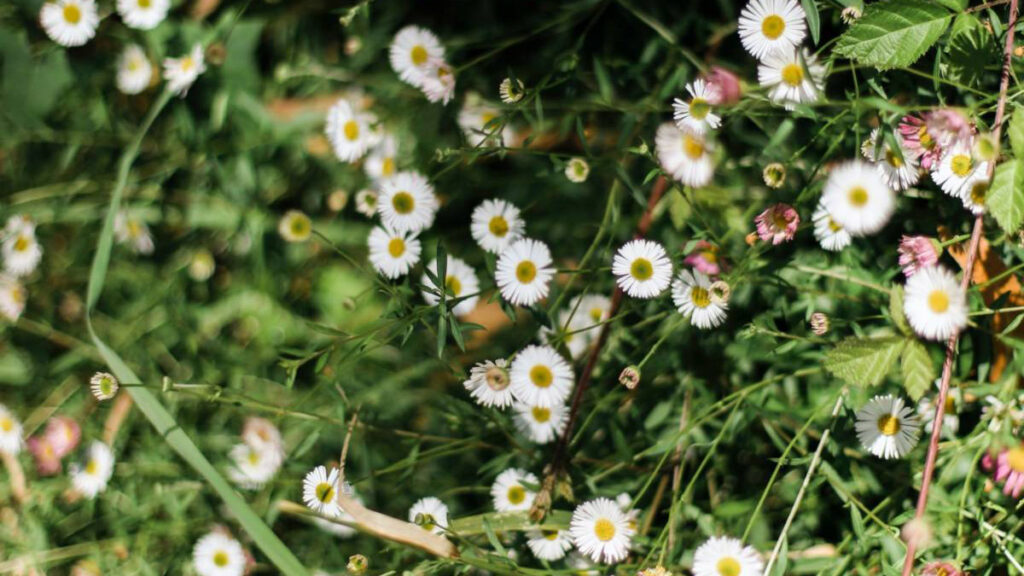
Tall weeds with white flowers on top, though often overlooked or dismissed as nuisances, play a crucial role in the ecological tapestry of our landscapes. These plants, characterized by their towering stature and delicate blooms, hold both practical and aesthetic significance. In this article, we delve into the world of these botanical wonders, exploring their identification, common varieties, benefits, challenges, and the importance of cultivating a balanced perspective towards their presence.
I. Introduction
A. Brief Overview of Tall Weeds with White Flowers Tall weeds boasting elegant white flowers represent a diverse array of botanical species. Their presence can be found in various habitats, from roadside verges to meadows and gardens. Despite being commonly labeled as weeds, they offer valuable ecological services and possess unique beauty.
B. Significance in Gardening and Landscaping In the realm of gardening and landscaping, these plants present both opportunities and challenges. Understanding their role and characteristics is essential for creating harmonious and sustainable outdoor spaces.
C. Importance in Biodiversity Tall weeds with white flowers contribute to biodiversity by providing resources for pollinators, supporting soil health, and serving as food sources for wildlife. Recognizing their ecological importance is key to fostering healthy ecosystems.
II. Identifying Tall Weeds with White Flowers
A. Characteristics and Physical Appearance
- Height and Growth Pattern: Tall weeds with white flowers typically exhibit robust growth, reaching considerable heights compared to surrounding vegetation. Their upright stems often branch out, creating a distinctive silhouette.
- Flower Structure and Color: The flowers of these weeds are characterized by their white or off-white hues, arranged in intricate clusters or umbels. The delicate petals and intricate inflorescences add a touch of elegance to their appearance.
- Leaf Shape and Texture: Leaves of tall weeds with white flowers vary in shape and texture, ranging from finely dissected to broad and lobed. These foliage characteristics aid in their identification and differentiation from other plant species.
III. Common Varieties of Tall Weeds with White Flowers
A. Wild Carrot (Daucus carota)
- Description and Habitat: Wild carrot, also known as Queen Anne’s lace, is a biennial plant native to Europe and Asia but widely naturalized across North America. It thrives in disturbed areas such as roadsides, fields, and meadows.
- Ecological Role and Uses: Despite its status as a weed, wild carrot provides nectar and pollen for pollinators and serves as a host plant for certain butterfly species. Additionally, its taproot is edible and has historical medicinal uses.
- Control and Management Techniques: Due to its prolific seeding and aggressive growth, wild carrot can become invasive in certain environments. Control methods include manual removal, mowing, and targeted herbicide application.
B. Queen Anne’s Lace (Daucus carota)
- Introduction and Historical Significance: Queen Anne’s lace, a close relative of wild carrot, holds cultural significance and has inspired folklore and legend throughout history. Its delicate flowers were named after Queen Anne of England.
- Botanical Features and Distribution: This biennial plant produces lacy white flowers arranged in flat-topped umbels, making it easily recognizable. It thrives in open, sunny habitats and can be found across temperate regions worldwide.
- Cultural Significance and Symbolism: Queen Anne’s lace symbolizes femininity, grace, and natural beauty in various cultural contexts. Its intricate flowers have been used in floral arrangements and herbal medicine for centuries.
C. White Campion (Silene latifolia)
- Overview and Habitat: White campion, also known as bladder campion, is a herbaceous perennial native to Europe but naturalized in North America. It prefers disturbed habitats such as roadsides, waste areas, and open woodlands.
- Reproductive Strategies and Lifecycle: This plant reproduces both by seed and vegetatively, forming dense colonies over time. Its white flowers bloom at night, attracting nocturnal pollinators such as moths and bats.
- Ecological Impact and Control Measures: While white campion provides food for wildlife and contributes to ecosystem diversity, it can outcompete native vegetation in certain environments. Management strategies include mechanical removal and herbicidal treatments.
IV. Benefits and Challenges of Tall Weeds with White Flowers
A. Ecological Benefits
- Pollinator Support and Habitat Provision: Tall weeds with white flowers serve as important nectar and pollen sources for bees, butterflies, and other pollinators, contributing to ecosystem resilience and biodiversity.
- Soil Stabilization and Erosion Control: Their extensive root systems help prevent soil erosion and improve soil structure, particularly in areas prone to disturbance or degradation.
B. Gardening and Landscaping Challenges
- Invasive Potential and Competition: Some species of tall weeds with white flowers have invasive tendencies, spreading rapidly and outcompeting native vegetation. Their aggressive growth can pose challenges for gardeners and land managers.
- Aesthetic Considerations and Maintenance Issues: While these weeds may offer ecological benefits, their presence can detract from the desired aesthetic of cultivated landscapes. Balancing their ecological value with aesthetic preferences requires thoughtful planning and management.
V. Cultivating a Balanced Perspective
A. Incorporating Tall Weeds into Garden Designs
- Companion Planting and Wildlife Gardening: Intentionally incorporating tall weeds with white flowers into garden designs can support pollinators and create dynamic, biodiverse habitats. Companion planting strategies can help mitigate their invasive potential while enhancing ecosystem services.
- Sustainable Landscaping Practices: Adopting sustainable landscaping practices, such as mulching, composting, and minimizing chemical inputs, can promote the coexistence of tall weeds with white flowers alongside cultivated plants.
B. Responsible Management Strategies
- Integrated Pest Management Techniques: Employing integrated pest management techniques allows for the effective control of invasive weeds while minimizing environmental impact. This approach integrates cultural, mechanical, biological, and chemical control methods based on ecological principles.
- Education and Awareness Initiatives: Educating gardeners, landowners, and the public about the ecological importance of tall weeds with white flowers fosters appreciation and understanding. By raising awareness about their role in supporting biodiversity, we can encourage responsible stewardship of natural landscapes.
In conclusion, tall weeds with white flowers on top are more than just unwanted intruders in our gardens and landscapes; they are integral components of healthy ecosystems. By understanding their characteristics, recognizing their ecological value, and implementing responsible management practices, we can cultivate landscapes that balance beauty, biodiversity, and functionality. Embracing the diversity of plan




